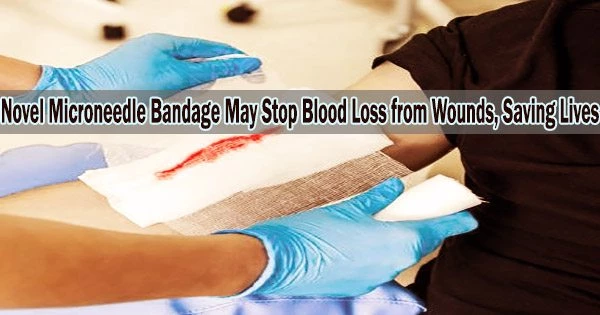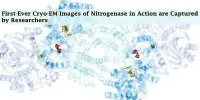A novel microneedle bandage is a promising technology for controlling blood loss from wounds. The microneedles in the bandage help to rapidly seal the wound, reducing the amount of bleeding and helping to prevent life-threatening blood loss.
A machinist experiences a work accident and is detained in traffic on the way to the hospital, or a soldier is shot seriously on a faraway battlefield. The main cause of death for Americans between the ages of one and 46 is secondary, uncontrolled bleeding after traumatic injuries.
A unique microneedle patch developed by Amir Sheikhi, assistant professor of chemical engineering and biomedical engineering at Penn State, aims to remedy this situation by instantly stopping bleeding after injury.
He laid out his prototype in a new paper that will be published in the May issue of Bioactive Materials, available now online.
“Excessive bleeding is a serious challenge for human health,” Sheikhi said. “With hemorrhaging injuries, it is often the loss of blood not the injury itself that causes death. There is an unmet medical need for ready-to-use biomaterials that promote rapid blood coagulation.”
Sheikhi’s hemostatic microneedle technology can be used to control bleeding immediately by applying it like a regular adhesive bandage. The biocompatible and biodegradable microneedle arrays (MNAs) on the patch increase its surface contact with blood and accelerate the clotting process. In order to encourage wound closure, the needles additionally improve the patch’s adhesive qualities through mechanical interlocking.
Excessive bleeding is a serious challenge for human health. With hemorrhaging injuries, it is often the loss of blood not the injury itself that causes death. There is an unmet medical need for ready-to-use biomaterials that promote rapid blood coagulation.
Professor Amir Sheikhi
“In vitro, the engineered MNAs reduced clotting time from 11.5 minutes to 1.3 minutes; and in a rat liver bleeding model, they reduced bleeding by more than 90%,” Sheikhi said. “Those 10 minutes could be the difference between life and death.”
The hydrogel technology currently utilized in hospitals to heal bleeding wounds can be compared to the MNA patch, however hydrogel applications demand preparation and medical knowledge. Similar to an ordinary over-the-counter adhesive bandage, the microneedle patch is pre-engineered for fast application and may be used by anyone to halt bleeding, according to Sheikhi.
Since they are so small, microneedles are already used to transfer biologics, such as cells or medications, through the skin or for aesthetic procedures to stimulate collagen synthesis, according to Sheikhi.
With plans to further test the technique, the researchers are currently aiming to bring the patch from the lab to the marketplace.
All the animal experiments were carried out after the approval of animal protocol by the UCLA Animal Research Committee. Animal handling procedures were performed following the “Guide for the Care of Laboratory Animals.”
Sheikhi received financial support from the Canadian Institutes of Health Research through a postdoctoral fellowship as well as the startup fund from The Pennsylvania State University.
Sheikhi started this work as a postdoctoral scholar at the University of California, Los Angeles, in the lab of Ali Khademhosseini, now the chief executive officer of Terasaki Institute for Biomedical Innovation (TIBI). Other UCLA contributors include Reihaneh Haghniaz, Hossein Montazerian, Avijit Baidya, Maryam Tavafoghi and Yi Chen. Han-Jun Kim, Yangzhi Zhu and Solmaz Karamikamkar, all formerly with the Khademhosseini Lab and now all affiliated with TIBI, also contributed.
Additionally, the bandage can be easily applied and removed, making it a practical solution for first responders and medical personnel in emergency situations.
















